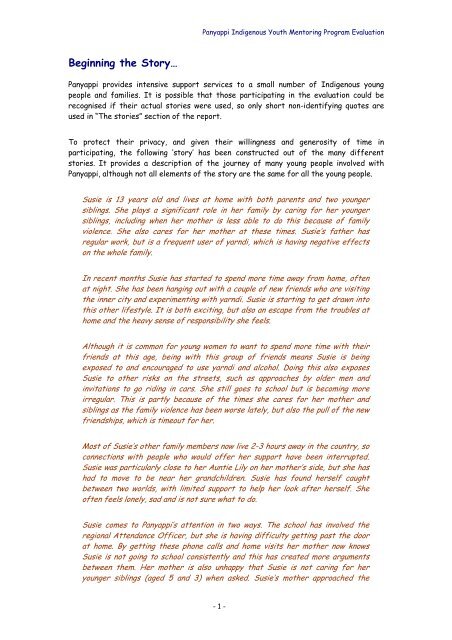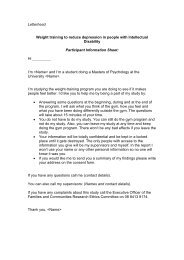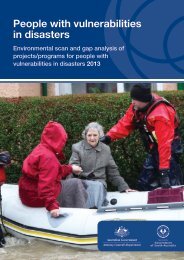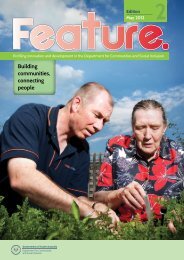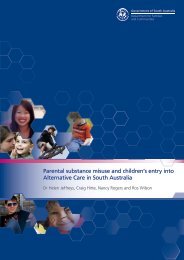Panyappi Indigenous Youth Mentoring Program Evaluation
Panyappi Indigenous Youth Mentoring Program Evaluation
Panyappi Indigenous Youth Mentoring Program Evaluation
You also want an ePaper? Increase the reach of your titles
YUMPU automatically turns print PDFs into web optimized ePapers that Google loves.
Beginning the Story…<br />
<strong>Panyappi</strong> <strong>Indigenous</strong> <strong>Youth</strong> <strong>Mentoring</strong> <strong>Program</strong> <strong>Evaluation</strong><br />
<strong>Panyappi</strong> provides intensive support services to a small number of <strong>Indigenous</strong> young<br />
people and families. It is possible that those participating in the evaluation could be<br />
recognised if their actual stories were used, so only short non-identifying quotes are<br />
used in “The stories” section of the report.<br />
To protect their privacy, and given their willingness and generosity of time in<br />
participating, the following ‘story’ has been constructed out of the many different<br />
stories. It provides a description of the journey of many young people involved with<br />
<strong>Panyappi</strong>, although not all elements of the story are the same for all the young people.<br />
Susie is 13 years old and lives at home with both parents and two younger<br />
siblings. She plays a significant role in her family by caring for her younger<br />
siblings, including when her mother is less able to do this because of family<br />
violence. She also cares for her mother at these times. Susie’s father has<br />
regular work, but is a frequent user of yarndi, which is having negative effects<br />
on the whole family.<br />
In recent months Susie has started to spend more time away from home, often<br />
at night. She has been hanging out with a couple of new friends who are visiting<br />
the inner city and experimenting with yarndi. Susie is starting to get drawn into<br />
this other lifestyle. It is both exciting, but also an escape from the troubles at<br />
home and the heavy sense of responsibility she feels.<br />
Although it is common for young women to want to spend more time with their<br />
friends at this age, being with this group of friends means Susie is being<br />
exposed to and encouraged to use yarndi and alcohol. Doing this also exposes<br />
Susie to other risks on the streets, such as approaches by older men and<br />
invitations to go riding in cars. She still goes to school but is becoming more<br />
irregular. This is partly because of the times she cares for her mother and<br />
siblings as the family violence has been worse lately, but also the pull of the new<br />
friendships, which is timeout for her.<br />
Most of Susie’s other family members now live 2-3 hours away in the country, so<br />
connections with people who would offer her support have been interrupted.<br />
Susie was particularly close to her Auntie Lily on her mother’s side, but she has<br />
had to move to be near her grandchildren. Susie has found herself caught<br />
between two worlds, with limited support to help her look after herself. She<br />
often feels lonely, sad and is not sure what to do.<br />
Susie comes to <strong>Panyappi</strong>’s attention in two ways. The school has involved the<br />
regional Attendance Officer, but she is having difficulty getting past the door<br />
at home. By getting these phone calls and home visits her mother now knows<br />
Susie is not going to school consistently and this has created more arguments<br />
between them. Her mother is also unhappy that Susie is not caring for her<br />
younger siblings (aged 5 and 3) when asked. Susie’s mother approached the<br />
- 1 -


